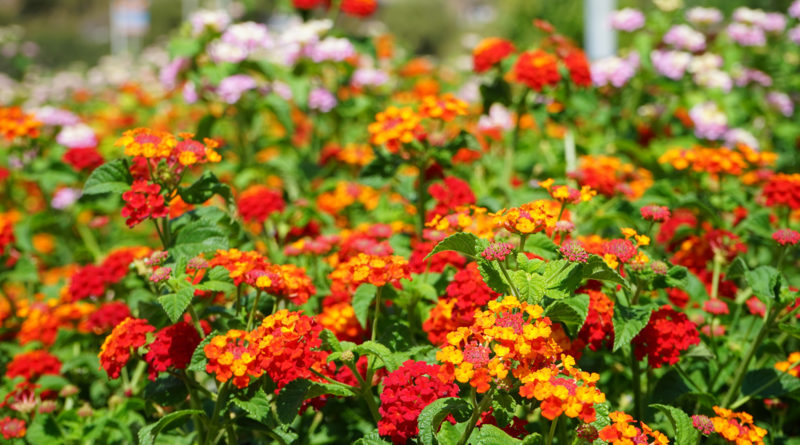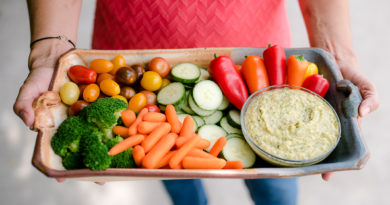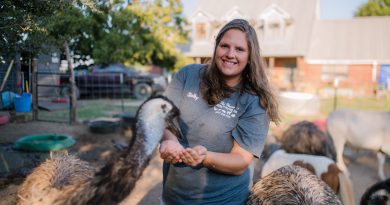Right Plant, Right Place
Consider climate when planning a garden
By Amy Rognlie
If there is one cardinal rule for gardening, this is it: right plant, right place. That sounds…easy. But we’re talking gardening in Central Texas, so all bets are off. Plants that would happily produce cascades of lovely blooms in full sun in, say, Ohio, will shrivel up and blow away after only a few days of basking in our more-than-balmy temperatures. Of course, we are accustomed to summer’s extreme heat and humidity, but my garden — not to mention my AC bill — will testify to the fact that this summer has been a veritable inferno. Not good, especially for veggies. But in general, in a “normal” gardening year, the plants you choose and where you plant the little dears will make all the difference in success or abject failure.
In her well-loved novel, Elizabeth and Her German Garden, published in 1889, author Elizabeth von Arnim vividly describes her first gardening experience as a child in Germany: “And after all, nothing came up. The labor of digging and watering, the anxious zeal with which I pounced on weeds, the poring over gardening books, the plans made as I sat on the little seat in the middle gazing admiringly and with the eye of faith on the trim surface so soon to be gemmed with a thousand flowers, the reckless expenditure of pfennigs — all, all had been in vain. No sun shone there, and nothing grew.” Can I get an amen?
“I have taken care in choosing my plants to put down only those humble ones that are easily pleased and grateful for little, for my soil is by no means all that it might be, and to most plants the climate is rather trying. I feel really grateful to any flower that is sturdy and willing enough to flourish here…”
— Elizabeth von Arnim
Though gardening in Central Texas has not been quite that dismal for me, I can sympathize, since I too, have had my visions of floral grandeur dashed more than once. Though disappointing at the time, I did learn what not to do… sigh. And of course, as I discussed last time, experimentation is often part of the overall enjoyment of gardening. But for many folks, fussing over a finicky plant that may or may not do well in our climate is not their idea of fun. So, what is the average gardener to do?
I’m glad you asked. Here’s my highly original advice: Don’t shy away from planting “ordinary” plants. Take good ol’ purple heart, for instance. I fell in love with purple heart (Setcrasea pallida) when I first moved here. Who cares if it grows in every dry, neglected planter everywhere in Bell County? It’s purple. And it has tiny, pink iridescent flowers. And it is drought tolerant. And heat tolerant. And noninvasive. And you can propagate it like crazy. If a stem breaks off, stick it in the ground or some potting soil or even a glass of water and the thing will root in days. And did I mention that it is purple? What’s not to like?
There’s a reason why you see plants like purple heart, lantana, Mexican petunias, Turk’s cap, rock rose, salvia, agave and balloon flowers flourishing in so many of your neighbors’ yards. These “ordinary” plants are either native to our area or have adapted well and are wise choices for any garden. Once they have been established, native plants will not need much extra watering and they will reliably return year after year, thriving even in our torrid summers. These plants are as beautiful as they are tough, which is a win-win situation, because, as
Arnim’s Elizabeth expresses, “…I don’t love things that will only bear the garden for three or four months in the year and require coaxing and petting for the rest of it. Give me a garden full of strong, healthy creatures, able to stand roughness and cold [in Texas, read ‘heat’] without dismally giving in and dying.”
If you have your heart set on “a garden full of strong, healthy creatures” here in Zone 8b, beginning with native or adapted plants is key. Considering water requirements, sun/shade requirements, size, lifespan and hardiness zone is also crucial.
Though much of this information is usually included on the plant tag, make sure to take into consideration that you are gardening in, as our German gardener says, “a rather trying climate.” This means that even plants labeled as full sun will usually benefit from at least some shade, especially during the brutally hot summer months.
If you have spent most of your summer gazing at your garden from inside your air-conditioned house, now is a great time to get out there and plan for fall when you and your plants will both be able to enjoy the cooler temperatures.
Tips for August & September
- If your tomato plants have made it through the summer, now is the time to cut them down to about one-third their size, even if they have flowers and tomatoes on them. After cutting them back, feed them and keep a consistent watering schedule. This will (hopefully) help to ensure that you have a great fall harvest. Consider using shade cloth to give some protection from the sun until the temperatures cool.
- Good annuals to plant in pots or in beds this time of year include celosia, petunias, marigolds, coreopsis, pentas, purslane, salvia, periwinkle, zinnias, impatiens and cosmos.
- Think about fall and winter gardening, which is prime time for growing veggies and flowers that will thrive in our temperate climate once the scorching heat starts to abate. Many veggies including beans, beets, carrots and corn, as well as many herbs and flowers can all be planted from seed or transplants beginning around the middle of August.
- September is a great time to plant new perennials, shrubs or trees as it gives them months to establish their root system before the summer heat sets in. Plan carefully!
- If you have a spot that has morning shade and afternoon sun (a tricky combination), try to choose plants that are full sun but can take some shade, rather than the other way around. It’s the intensity and not the duration of the sunlight that is at issue in this case.




